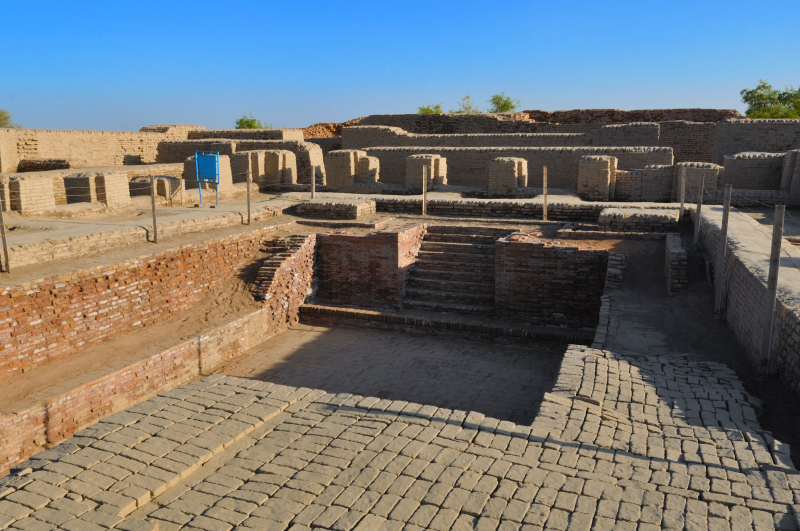One of the Most Famous Structures of the Indus Valley Civilization is the Great Bath
Dockyards, granaries, warehouses, brick platforms, and gigantic protective walls demonstrate the Indus Valley people's superior architecture. One of the most famous constructions of the Harappan Civilization is the Great Bath at Mohenjo-Daro in Sindh, Pakistan. It is thought to be the world's first public water tank. Archaeological evidence suggests that the Great Bath was constructed in the third millennium BCE, shortly after the "citadel" mound on which it stands was raised.
The Great Bath is by far the most proficient worker, occasionally upholding lofty religious and social standards. It is designed in the shape of a step well, with stairs leading down to the well. It is 11.88 meters long and 7.01 meters wide, with a maximum depth of 2.43 meters. The structure is entered through two large staircases. With beautifully matched bricks on the edge, gypsum plaster, and a thick layer of bitumen, the Great Bath is watertight (waterproof tar). The majority of experts agree that this tank was used for specific religious functions, in which water was used to purify and renew the bathers' well-being. This demonstrates the historical significance of ceremonial bathing in sacred tanks, pools, and rivers.












